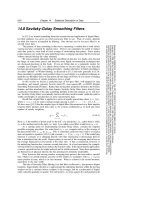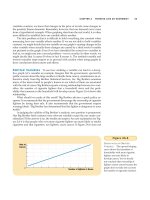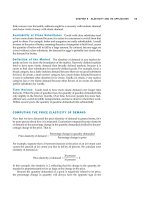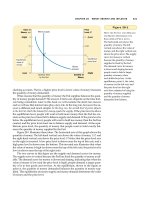Tài liệu Evidence-based Management of Acute Musculoskeletal Pain ppt
Bạn đang xem bản rút gọn của tài liệu. Xem và tải ngay bản đầy đủ của tài liệu tại đây (274.27 KB, 83 trang )
Anterior Knee Pain Anterior Knee Pain Anterior Knee Pain Anterior Knee Pain
or Knee Pain Anterior Knee Pain Anterior Knee Pain Anterior Knee Pain Anter
Anterior Knee Pain Anterior Knee Pain Anterior Knee Pain Anterior Knee Pain
Knee Pain Anterior Knee Pain Anterior Knee Pain Anterior Knee Pain Anterior
Anterior Knee Pain Anterior Knee Pain Anterior Knee Pain Anterior Knee Pain
ain Acute Shoulder Pain Acute Shoulder Pain Acute Shoulder Pain Acute Shoul
cute Shoulder Pain Acute Shoulder Pain Acute Shoulder Pain Acute Shoulder Pa
Pain Acute Shoulder Pain Acute Shoulder Pain Acute Shoulder Pain Acute Shou
Acute Shoulder Pain Acute Shoulder Pain Acute Shoulder Pain Acute Shoulder
ain Acute Shoulder Pain Acute Shoulder Pain Acute Shoulder Pain Acute Shoul
k Acute Neck Pain Acute Neck Pain Acute Neck Pain Acute Neck Pain Acute N
e Neck Pain Acute Neck Pain Acute Neck Pain Acute Neck Pain Acute Neck Pa
ck Acute Neck Pain Acute Neck Pain Acute Neck Pain Acute Neck Pain Acute
cute Neck Pain Acute Neck Pain Acute Neck Pain Acute Neck Pain Acute Neck
k Acute Neck Pain Acute Neck Pain Acute Neck Pain Acute Neck Pain Acute N
ain Acute Thoracic Spinal Pain Acute Thoracic Spinal Pain Acute Thoracic Spi
Acute Thoracic Spinal Pain Acute Thoracic Spinal Pain Acute Thoracic Spinal P
Pain Acute Thoracic Spinal Pain Acute Thoracic Spinal Pain Acute Thoracic Sp
Acute Thoracic Spinal Pain Acute Thoracic Spinal Pain Acute Thoracic Spinal
ain Acute Thoracic Spinal Pain Acute Thoracic Spinal Pain Acute Thoracic Spi
Back Pain Acute Low Back Pain Acute Low Back Pain Acute Low Back Pain A
Acute Low Back Pain Acute Low Back Pain Acute Low Back Pain Acute Low
Back Pain Acute Low Back Pain Acute Low Back Pain Acute Low Back Pain
Pain Acute Low Back Pain Acute Low Back Pain Acute Low Back Pain Acut
Back Pain Acute Low Back Pain Acute Low Back Pain Acute Low Back Pain A
Evidence-based
Management of Acute
Musculoskeletal Pain
Australian Acute Musculoskeletal Pain Guidelines Group
A Guide for Clinicians
Evidence-based
Management of Acute
Musculoskeletal Pain
Australian Acute Musculoskeletal
Pain Guidelines Group
A Guide for Clinicians
AUSTRALIAN ACADEMIC PRESS PTY L
TD
PUBLISHERS FOR THE BEHAVIOURAL SCIENCES
First published in 2004 by
Australian Academic Press Pty. Ltd.
32 Jeays Street
Bowen Hills QLD 4006
Australia
www.australianacademicpress.com.au
All responsibility for editorial matter rests with Australian Acute Musculoskeletal Pain Guidelines Group.
Any views or opinions expressed are therefore not necessarily those of Australian Academic Press.
Copyright © 2004 Australian Acute Musculoskeletal Pain Guidelines Group
ISBN 1 875378 52 9
Text design by Andrea Rinarelli of Australian Academic Press, Brisbane.
ii
Project Overview, Funding and Participants
This guide is derived from an evidence review, “Evidence-based Management of Acute
Musculoskeletal Pain” (available online at www.nhmrc.gov.au), undertaken by the Australian
Acute Musculoskeletal Pain Guidelines Group (2003). The evidence review was submitted to
the National Health and Medical Research Council (NHMRC) and was approved by the
Council in June 2003. This guide summarises the findings of the evidence review and provides
information sheets for consumers.
The evidence review was coordinated by the University of Queensland, funded by the
Commonwealth Department of Health and Ageing, and approved by the following organisations:
• Australian and New Zealand College of Anaesthetists, Faculty of Pain Medicine
• Australian Osteopathic Association
• Australian Physiotherapy Association
• Australian Rheumatology Association
• Chiropractic and Osteopathic College of Australasia
• Chiropractors’ Association of Australia
• Consumers’ Health Forum of Australia
• Royal Australian College of General Practitioners.
Disclaimer
Every attempt has been made to locate the most recent scientific evidence. Judgment is
necessary when applying evidence in a clinical setting. It is important to note that weak or
insufficient evidence does not necessarily mean that a practice is inadvisable, but may reflect
the insufficiency of evidence or the limitations of scientific investigation.
This document is intended as a guide to practice. The ultimate decision of how to proceed
rests with the clinician and the patient and depends on individual circumstances and beliefs
(NHMRC 1999).
Contents
iii
Chapter
Chapter
Chapter
List of Tables & Figures vi
About this Group vii
About this Guide xi
1 Introduction 1
1.1 Background 1
1.2 Summary of the Findings of the Evidence Review 1
1.3 Scope 2
1.4 Evidence Review and Guideline Development Process 3
1.5 Key Messages 5
1.5.1
Key Messages: Interventions 5
1.6 Limitations of the Evidence Review 5
References 6
2 Principles of Acute Pain Management 8
2.1 Pain 8
2.2 Acute and Chronic Pain 9
2.3 Pain Assessment 9
2.3.1
‘Red Flags’ 10
2.3.2
‘Yellow Flags’ 10
2.4 Pain Management 11
2.5 Key Messages: Acute Pain Management 11
References 12
3 Effective Communication 14
3.1 Communication 14
3.2 Key Messages: Communication 14
References 15
Chapter
Chapter
Chapter
Chapter
Chapter
4
Management Plan for Acute Musculoskeletal Pain
16
4.1 Developing a Management Plan 16
4.2 Components of a Management Plan 16
4.2.1
Assessment 16
4.2.2
Management 17
4.2.3
Review 17
4.3 Key Messages: Management Plan 18
References 18
5
Acute Low Back Pain
19
5.1 Background 19
5.2 Definition 19
5.3 Scope 20
5.4 Alerting Features of Serious Conditions 20
5.5 Key Messages: Acute Low Back Pain 21
References 29
6
Acute Thoracic Spinal Pain
30
6.1 Background 30
6.2 Definition 30
6.3 Scope 30
6.4 Alerting Features of Serious Conditions 31
6.5 Key Messages: Acute Thoracic Spinal Pain 31
References 34
7
Acute Neck Pain
35
7.1 Background 35
7.2 Definition 35
7.3 Scope 35
7.4 Alerting Features of Serious Conditions 36
7.5 Key Messages: Acute Neck Pain 37
References 43
8
Acute Shoulder Pain
44
8.1 Background 44
8.2 Definition 44
8.3 Scope 45
8.4 Alerting Features of Serious Conditions 45
8.5 Key Messages: Acute Shoulder Pain 46
References 50
iv
Contents
Chapter
Appendix
Appendix
Appendix
Appendix
Appendix
9
Anterior Knee Pain
51
9.1 Background 51
9.2 Definition 51
9.3 Scope 52
9.4 Alerting Features of Serious Conditions 52
9.5 Key Messages: Anterior Knee Pain 53
References 57
A Pain Assessment Tools 59
B Ancillary Investigations 62
C Canadian C-Spine Rule 63
D Knee Rules: Indications for Knee Xray 64
E Patient Information Sheets 66
Acute Low Back Pain
Acute Thoracic Spinal Pain
Acute Neck Pain
Acute Shoulder Pain
Anterior Knee Pain
Glossary of Terms 77
v
Contents
Tables
1.1
Levels of Evidence 3
1.2 Criteria for Categorising Interventions 4
2.1 Acute Pain Management: Key Messages 11
3.1 Effective Communication: Key Messages 14
4.1 Management Plan: Key Message 18
5.1 Alerting Features of Serious Conditions
Associated with Acute Low Back Pain
21
5.2 Summary of Key Messages: Acute Low Back Pain 22
6.1 Alerting Features of Serious Conditions
Associated with Acute Thoracic Spinal Pain
31
6.2 Summary of Key Messages: Acute Thoracic Spinal Pain 32
7.1 Alerting Features of Serious Conditions
Associated with Acute Neck Pain
37
7.2 Summary of Key Messages: Acute Neck Pain 38
8.1 Alerting Features of Serious Conditions
Associated with Acute Shoulder Pain
46
8.2 Summary of Key Messages: Acute Shoulder Pain 47
9.1 Alerting Features of Serious Conditions
Associated with Anterior Knee Pain
53
9.2 Summary of Key Messages: Anterior Knee Pain 54
Figures
A1
Elements of a Pain History 59
A2 Pain Diagram 60
A3 Categorical Pain Rating Scale 61
A4 Visual Analogue Scale of Pain Intensity (VAS) 61
A5 Ten Point Numerical Rating Scale (NRS) 61
B1 Appropriate Investigations for Possible Serious
Causes of Acute Musculoskeletal Pain
62
C1 The Canadian C-Spine Rule 63
D1 Ottawa Knee Rule 64
D2 Pittsburgh Knee Rule 65
D3 Bauer Rule 65
vi
List of Tables & Figures
Executive Committee
Professor Peter Brooks, Chair Executive Dean, Faculty of Health
Sciences, University of Queensland
Associate Professor Lyn March Consultant Rheumatologist and Clinical
Epidemiologist; Associate Professor in
Medicine and Public Health, University
of Sydney; Senior Staff Specialist,
Royal North Shore Hospital
Professor Nikolai Bogduk Director, Newcastle Bone and Joint
Institute, Royal Newcastle Hospital
Professor Nicholas Bellamy Director, Centre of National Research on
Disability and Rehabilitation Medicine,
University of Queensland
Project Management
Ms Natalie Spearing Project Manager, Faculty of Health
Sciences, University of Queensland
Ms Megan Fraser Project Assistant, Faculty of Health
Sciences, University of Queensland
Review Groups
Acute Low Back Pain
Associate Professor Lyn March Consultant Rheumatologist and Clinical
Epidemiologist; Associate Professor in
Medicine and Public Health, University
of Sydney; Senior Staff Specialist,
Royal North Shore Hospital
Dr Lyndal Trevena General Practice, University of Sydney
Department of General Practice
Mr Simon French Chiropractor, Chiropractic and Osteopathic
College of Australasia
Ms Trudy Rebbeck Musculoskeletal Physiotherapist,
Australian Physiotherapy Association
Dr Fiona Blyth Medical Epidemiologist, Pain Management
and Research Centre, Royal North
Shore Hospital
vii
About this Group
viii
About this Group
Professor Nicholas Bellamy Director, Centre of National Research on
Disability and Rehabilitation Medicine,
University of Queensland
Ms Rebecca Coghlan Consumer Representative, Consumers’
Health Forum of Australia
Dr Nick Penney Osteopath, Australian Osteopathic
Association
Dr Hanish Bagga PhD Fellow, Institute of Bone and Joint
Research, University of Sydney
Acute Thoracic Spinal Pain
Dr Michael Yelland
General Practice, Musculoskeletal
Medicine,
Australasian Faculty of
Musculoskeletal Medicine
Dr Keith Charlton Chiropractor, Queensland
Associate Professor Gwendolen Jull Physiotherapist, Australian Physiotherapy
Association
Professor Peter Brooks Executive Dean, Faculty of Health
Sciences, University of Queensland
Professor Nicholas Bellamy Director, Centre of National Research on
Disability and Rehabilitation Medicine,
University of Queensland
Acute Neck Pain
Professor Nikolai Bogduk Professor of Pain Medicine; Director,
Newcastle Bone and Joint Institute, Royal
Newcastle Hospital
Dr Philip Bolton Chiropractor, Head of Human Physiology,
University of Newcastle
Associate Professor Gwendolen Jull Physiotherapist, Australian Physiotherapy
Association
Professor Nicholas Bellamy Director, Centre of National Research on
Disability and Rehabilitation Medicine,
University of Queensland
Dr Phillip Giles
General Practice, Musculoskeletal
Medicine,
Australasian Faculty
of Musculoskeletal Medicine
Associate Professor Les Barnsley Rheumatologist, Australian Rheumatology
Association
ix
About this Group
Acute Shoulder Pain
Dr Wade King Pain Medicine Specialist, Newcastle Pain
Management and Research Group, Royal
Newcastle Hospital
Associate Professor Rheumatologist, Australian Rheumatology
Rachelle Buchbinder Association
Associate Professor Sally Green Physiotherapist, Australian Physiotherapy
Association
Dr Scott Masters
General Practice, Musculoskeletal
Medicine,
Australasian Faculty
of Musculoskeletal Medicine
Dr Henry Pollard Chiropractor, Chiropractic and Osteopathic
College of Australasia
Dr Peter Nash Rheumatology, Director Rheumatology
Research Unit, Nambour Hospital
Professor Peter Brooks Executive Dean, Faculty of Health
Sciences, University of Queensland
Professor Nicholas Bellamy Director, Centre of National Research
on Disability and Rehabilitation Medicine,
University of Queensland
Dr Simon Bell Orthopaedic Surgeon, Victoria
Anterior Knee Pain
Dr David Vivian General Practice, Musculoskeletal
Medicine, Australasian Faculty of
Musculoskeletal Medicine
Associate Professor Lyn March Consultant Rheumatologist and Clinical
Epidemiologist; Associate Professor
in Medicine and Public Health, University
of Sydney; Senior Staff Specialist,
Royal North Shore Hospital
Dr Sallie Cowan Centre for Sports Medicine Research,
School of Physiotherapy, University
of Melbourne
Dr Kay Crossley Centre for Sports Medicine Research,
School of Physiotherapy, University
of Melbourne
Professor Nicholas Bellamy Director, Centre of National Research
on Disability and Rehabilitation Medicine,
University of Queensland
x
About this Group
Dr Myles Coolican Orthopaedic Surgeon, New South Wales
Matthew Burke Postgraduate Medical School, Northern
Clinical School, University of Sydney
Ryan Clark Postgraduate Medical School, Northern
Clinical School, University of Sydney
Steering Committee
Associate Professor Les Barnsley Australian Rheumatology Association
Dr Philip Bolton Chiropractors’ Association of Australia
Associate Professor Australian Rheumatology Association
Rachelle Buchbinder
Ms Rebecca Coghlan Consumers’ Health Forum of Australia
Associate Professor Milton Cohen Australian and New Zealand College of
Anaesthetists, Faculty of Pain Medicine
Professor Paul Glasziou Royal Australian College of General
Practitioners
Associate Professor Sally Green Australian Physiotherapy Association
Dr Newman Harris Australian and New Zealand College of
Anaesthetists, Faculty of Pain Medicine
Associate Professor Gwendolen Jull Australian Physiotherapy Association
Ms Roz Lucas Commonwealth Department of Health
and Ageing
Dr Peter MacIsaac Commonwealth Department of Health
and Ageing
Professor John Murtagh Royal Australian College of General
Practitioners
Dr Nick Penney Australian Osteopathic Association
xi
About this Guide
Objectives
The objectives of this guide are:
• To inform practice in the management of acute muscu-
loskeletal pain
• To promote partnership between patients and clinicians in
decision-making.
Information for Clinicians
• This guide summarises the findings of a multi-disciplinary
review of the evidence on the diagnosis, prognosis and
interventions for acute musculoskeletal pain. The source
document (“Evidence-based Management of Acute
Musculoskeletal Pain”) is available at www.nhmrc.gov.au.
• The guide covers the management of five regions of acute
musculoskeletal pain (acute low back pain, acute thoracic
spinal pain, acute neck pain, acute shoulder pain, anterior
knee pain).
• The scientific evidence on the diagnosis, prognosis and
interventions for each of the five regions is summarised
in the form of Key Messages. The level of evidence
(see Table 1.1) for each Key Message is provided.
• An overview of acute pain management and effective
communication is provided.
• An outline of the management plan for acute muscu-
loskeletal pain is provided on the back cover of this booklet.
• An electronic version of this guide is available at www.
nhmrc.gov.au.
Information for patients
• Information sheets for acute low back pain, acute thoracic
spinal pain, acute neck pain, acute shoulder pain and ante-
rior knee pain are provided in the appendices to this
booklet (see Appendix E: Patient Information Sheets).
• The information sheets are designed for photocopying.
• Electronic versions of the information sheets are also avail-
able for downloading from www.nhmrc.gov.au.
xii
About this Guide
Introduction
1
1
Evidence-based Management of Acute Musculoskeletal Pain: A Guide for Clinicians
1.1 Background
Pain and disability associated with musculoskeletal conditions
represent a significant health burden in Australia. This guide
summarises the results of an evidence review (AAMPGG
2003) on the diagnosis, prognosis and treatment of the
following acute musculoskeletal conditions:
• Acute low back pain
• Acute thoracic spinal pain
• Acute neck pain
• Acute shoulder pain
• Anterior knee pain.
The evidence review is available at www.nhmrc.gov.au
(AAMPGG 2003).
1.2 Summary of the Findings of the
Evidence Review
The following are the main findings of the evidence review
(AAMPGG 2003):
Adopt a partnership approach
Management of acute musculoskeletal pain involves a part-
nership approach. The clinician and the patient should work
together to develop a management plan (see back cover of
this guide).
Manage acute pain to prevent chronic pain
An episode of acute musculoskeletal pain is of short duration
(less than three months), although such episodes may recur.
Chronic pain will occur in some cases when pain is unrelieved
over time. Successful management of acute pain reduces the
risk of chronic pain.
In the absence of a serious cause, a specific diagnosis
is not required for effective pain management
Clinical assessment comprising a history and physical exami-
nation is important to identify features of rare but serious
causes of acute musculoskeletal pain. In the majority of the
remaining cases, it is not possible to determine the cause of
acute musculoskeletal pain and a specific diagnosis is not
required for effective management.
Investigations are not generally indicated unless
features of serious conditions are evident
Ancillary investigations are generally not indicated for acute
non-specific musculoskeletal pain. When there are features of
serious conditions, further investigation is warranted (refer to
Appendix B: Ancillary Investigations).
Provide information, assurance and encouragement
to remain active
Simple interventions (providing information, assurance and
encouraging reasonable maintenance of activity) may be all
that are required for the successful management of acute
musculoskeletal pain, or they can be used in combination with
other interventions.
Review progress
People with acute musculoskeletal pain should be monitored
to evaluate progress and to check for latent features of serious
conditions (‘red flags’) and psychosocial factors (‘yellow flags’)
that may influence recovery.
1.3 Scope
The information contained in this guide is concerned only
with the management of acute episo
des of pain (i.e. pain
present for a duration of less than three months). Discussion of
chronic musculoskeletal pain (i.e. pain persisting for longer
than three months) is beyond the scope of this work.
2
Evidence-based Management of Acute Musculoskeletal Pain: A Guide for Clinicians
1 • Introduction
This guide summarises the evidence on the diagnosis, prog-
nosis and management of ‘non-specific’ conditions presenting
as acute musculoskeletal pain. Discussion of the management
of specific and serious conditions associated with acute muscu-
loskeletal pain is beyond the scope of this document.
The evidence contained in this document is current to
January 2003.
1.4 Evidence Review and Guideline
Development Process
The process of reviewing the evidence and developing guide-
lines was overseen by a national, multi-disciplinary steering
3
Evidence-based Management of Acute Musculoskeletal Pain: A Guide for Clinicians
1 • Introduction
Table 1.1: Levels of Evidence
LEVEL OF EVIDENCE* STUDY DESIGN
I Evidence obtained from a systematic review of all relevant
randomised controlled trials.
II Evidence obtained from at least one properly designed randomised
controlled trial.
III-1 Evidence obtained from well-designed pseudo randomised
controlled trials (alternate allocation or some other method).
III-2 Evidence obtained from comparative studies (including systematic
reviews of such studies) with concurrent controls and allocation
not randomised (cohort studies), case control studies,
or interrupted time series with a control group.
III-3 Evidence obtained from comparative studies with historical
control, two or more single arm studies, or interrupted time series
without parallel control group.
IV Evidence obtained from case series, either post-test or pre-test
and post-test.
CONSENSUS In the absence of scientific evidence and where the executive
committee, steering committee and review groups are in
agreement, the term ‘consensus’ has been applied.
* These levels of evidence have been developed primarily for intervention studies. Adapted from: National Health
and Medical Research Council of Australia (1999). A Guide to the Development, Implementation and Evaluation
of Clinical Practice Guidelines. NHMRC: Canberra.
committee and undertaken by multi-disciplinary review groups.
The work was developed according to standards outlined in the
National Health and Medical Research Council (NHMRC)
Toolkit series (1999b, 2000a,b,c,d).
The guideline development process consisted of:
• An evaluation of existing guidelines in the five topic areas;
•
A systematic search for new evidence to update
existing material;
• Critical appraisal of new studies that met
selection criteria;
• Data analysis (description of the results of new studies
and formulation of Key Messages to highlight the
main points);
• Development of a management plan for acute
musculoskeletal pain;
• Public consultation and independent review.
4
Evidence-based Management of Acute Musculoskeletal Pain: A Guide for Clinicians
1 • Introduction
Table 1.2: Criteria for Categorising Interventions
CATEGORY CRITERIA
Evidence of Benefit Interventions for which there is evidence of a clinically significant
beneficial effect compared to placebo, natural history or to other
interventions that have demonstrated a beneficial effect vs.
placebo or natural history.
Conflicting Evidence Interventions for which there have been a number of similar
controlled trials that have achieved conflicting results.
Insufficient Evidence Interventions for which there have been no controlled trials or
those for which an effect has been demonstrated in a general
sense but not in all specific regions of musculoskeletal pain or
those interventions that have not been tested against placebo.
Evidence of No Benefit Interventions that have demonstrated no effect vs. placebo or
natural history and have confidence intervals that exclude a
clinically important benefit.
1.5 Key Messages
The scientific evidence on the diagnosis, prognosis and
interventions for acute low back, thoracic spinal, neck,
shoulder and anterior knee pain is summarised in the form of
Key Messages. The aim of the Key Messages is to provide
information for use in decision-making that is based on the
best available evidence.
The level of scientific evidence accompanies each Key
Message (refer to Table 1.1). In the absence of scientific
evidence and where the executive committee, steering
committee and review groups were in agreement, the term
‘consensus’ was used. Where sufficient evidence has been
available or consensus achieved, recommendations have been
made. Study selection criteria and full references for the Key
Messages are available in the evidence review (AAPMGG
2003, available online at www.nhmrc.gov.au).
1.5.1 Key Messages: Interventions
Systematic reviews and randomised controlled trials (i.e. Level
I and II evidence) were sought to determine the efficacy of
interventions for acute musculoskeletal pain. While there was a
paucity of evidence, it is important to note that this does not
necessarily mean that a particular intervention is not efficacious
or beneficial. There are limits to scientific investigation and in
addition, evidence for interventions may exist in study types
excluded from the evidence review (AAMPGG 2003).
Because effect sizes were not always available, criteria were
developed to categorise the findings (refer to Table 1.2).
1.6 Limitations of the Evidence Review
> The majority of studies included in the evidence review
were performed in tertiary settings; there are limitations to
applying the findings to other settings.
> There was both a lack of evidence (i.e. few or no studies
conducted) and a lack of high quality, generalisable results
in studies of treatments for acute musculoskeletal pain.
This does not mean that an intervention is not efficacious
or beneficial.
5
Evidence-based Management of Acute Musculoskeletal Pain: A Guide for Clinicians
1 • Introduction
> There were limitations to the results of some systematic
reviews where data from heterogeneous interventions were
pooled. Specific and uniformly applied definitions for
treatment modalities are required.
> There were difficulties in locating studies and comparing the
results due to the range of terms used to describe acute
musculoskeletal pain.
> The use of a variety of outcome measures limited the
ability to compare results between studies.
> Few articles on treatments drew a distinction between
acute and chronic musculoskeletal pain. Systematic
reviews comprising studies on acute and chronic popula-
tions were included when there were no studies involving
specifically ‘acute’ populations.
> The decision to restrict the evidence review on interven-
tions to Level I and II studies (with the exception of the
thoracic spinal pain guidelines) precluded the inclusion of
the results of Level III and IV studies on treatment.
> The authors acknowledge that the NHMRC Levels of
Evidence used in this document are designed to rank
studies of interventions and may not adequately reflect the
study quality for other question types (e.g. diagnosis and
prognosis), where cross-sectional and cohort studies may
be the design of choice.
References
Australian Acute Musculoskeletal Pain Guidelines Group (AAMPGG) (2003).
Evidence-Based Management of Acute Musculoskeletal Pain [Online.
Available at ]. Australian Academic Press:
Brisbane.
National Health and Medical Research Council (1999). A Guide to the
Development, Implementation and Evaluation of Clinical Practice
Guidelines. NHMRC: Canberra.
National Health and Medical Research Council (2000a). How to Present the
Evidence for Consumers: Preparation of Consumer Publications. NHMRC:
Canberra.
National Health and Medical Research Council (2000b). How to Put the
Evidence into Practice: Implementation and Dissemination Strategies.
NHMR
C: Canberra.
6
Evidence-based Management of Acute Musculoskeletal Pain: A Guide for Clinicians
1 • Introduction
National Health and Medical Research Council (2000c). How to Review the
Evidence: Systematic Identification and Review of the Scientific Literature.
NHMRC: Canberra.
National Health and Medical Research Council (2000d). How to Use the
Evidence: Assessment and Application of Scientific Evidence. NHMRC:
Canberra.
7
Evidence-based Management of Acute Musculoskeletal Pain: A Guide for Clinicians
1 • Introduction
2
Principles of Acute Pain
Management
8
Evidence-based Management of Acute Musculoskeletal Pain: A Guide for Clinicians
2.1 Pain
Pain is the most common reason for self-medication and
entry into the health care system (Eccleston 2001). Pain,
acute and chronic, is now appreciated in a biopsychosocial
model (Engel 1977) that acknowledges the biological,
psychological and social dimensions of the pain experience.
This model acknowledges that pain is not simply determined
either by somatic factors or by factors ‘outside’ the body, but
rather is the end result of a disturbance in nociceptive func-
tion interacting with a person’s experience of being. This is
influenced in turn by interaction with people, objects and
events in the outside world, including the family, the commu-
nity and the environment. Thus whilst knowledge of nocicep-
tion and pain from a traditional medical science aspect is
essential to the understanding of pain, it cannot be divorced
from knowledge of perception and pain from a psychosocial
point of view.
Pain is an individual, multi-factorial experience influenced by
culture, previous pain experience, belief, mood and ability to
cope. Pain may be an indicator of tissue damage but may also
be experienced in the absence of an identifiable cause. The
degree of disability experienced in relation to the experience
of pain varies; similarly there is individual variation in
response to methods to alleviate pain (Eccleston 2001).
Effective pain relief is a human right (NHMRC 1999a):
• Unrelieved severe pain has adverse psychological
and physiological effects.
• Consumers should be involved in the assessment
and management of their pain.
• To be effective, pain treatment should be flexible
and tailored to individual needs.
9
Evidence-based Management of Acute Musculoskeletal Pain: A Guide for Clinicians
2 • Acute Pain Management
• It should be possible to reduce pain to a comfortable
or tolerable level.
• Pain should be treated early, as established, severe pain is
more difficult to treat.
2.2 Acute and Chronic Pain
The term ‘acute pain’ refers to pain that has been present for
less than three months (Bonica 1953; Merskey 1979). Chronic
pain is pain that has been present for longer than three
months (Merskey and Bogduk 1994). Successful management
of pain in the acute phase is essential to prevent transition to
chronic pain, which presents a significant individual, social
and economic burden.
The development of chronic pain is likely to be the result of
small, cumulative changes in lifestyle that have been made to
cope with acute musculoskeletal pain (Linton 2002). The
intensity, duration and character of the pain influence the
psychosocial response, and the psychosocial response in turn
influences the course of events.
Individuals vary in their potential to develop chronic pain.
A combination of behaviours, beliefs and emotions may be
involved in the transition from acute to chronic pain (Linton
2002). When pain is unrelieved over time, or if there are
recurrent episodes of pain, chronic pain may develop. It is
essential to identify people with acute pain who are at risk of
developing chronic pain, and to intervene early to prevent
this occurrence.
2.3 Pain Assessment
A pain assessment can identify features of a serious underlying
condition (‘red flags’) and psychosocial factors that may influ-
ence recovery (‘yellow flags’). Tools for use in pain assessment,
such as a pain history, a pain diagram, and pain intensity
scales, are provided in Appendix A.
10
Evidence-based Management of Acute Musculoskeletal Pain: A Guide for Clinicians
2 • Acute Pain Management
2.3.1 ‘Red Flags’
The term ‘red flags’ refers to clinical features that may be asso-
ciated with the presence of a serious, but relatively uncommon
condition requiring urgent evaluation. Such conditions
include tumours, infection, fractures and neurological damage.
Screening for serious conditions occurs as part of a history and
physical examination and should occur at the initial assess-
ment and subsequent visits. Alerting features of serious condi-
tions are summarised in the specific guideline topics (Chapters
5, 6, 7, 8, 9).
2.3.2 ‘Yellow Flags’
The term ‘yellow flags’ was introduced to identify psychosocial
and occupational factors that may increase the risk of
chronicity in people presenting with acute low back pain.
Kendall et al. (1997) developed guidelines for assessing ‘yellow
flags’ in acute low back pain (see www.nzgg.org.nz), outlining
factors that should be assessed particularly when progress is
slower than expected. The presence of such factors is a prompt
for further detailed assessment and early intervention. The
areas to evaluate include:
• Attitudes and beliefs about pain;
• Behaviours;
• Compensation issues;
• Diagnostic and treatment issues;
• Emotions;
• Family;
• Work.
‘Red flags’ and ‘yellow flags’ are not mutually exclusive and
intervention may be required for both clinical and psychoso-
cial risk factors.
11
Evidence-based Management of Acute Musculoskeletal Pain: A Guide for Clinicians
2 • Acute Pain Management
2.4 Pain Management
Von Korff (1999) demonstrated that people in pain want to:
• Know what the problem is;
• Be reassured that it is not serious;
• Be relieved of their pain;
• Receive information.
People in pain want advice on how to manage their pain,
including non-pharmacological and pharmacological inter-
ventions, and how to return to normal activity. It is important
to satisfy the need for knowledge, alleviate fear and to focus on
preventing disability due to pain (Main 2002). The use of a
preventive approach to shape behaviour is best done at the
initial visit. This is particularly important in acute muscu-
loskeletal pain, which may recur.
The NHMRC guidelines for the management of acute pain
(1999a) cite a number of misconceptions about pain manage-
ment, including a lack of understanding of the pharmacoki-
netics of analgesics, mistaken beliefs about addiction, poor
knowledge of dosage requirements, concerns about side effects
and a lack of awareness that pain is potentially harmful.
2.5 Key Messages: Acute Pain Management
The Key Messages in Table 2.1 are conclusive statements
based on the findings of the evidence review (AAMPGG
2003). The information is intended to inform the decision-
making process.
Table 2.1: Acute Pain Management: Key Messages
ACUTE PAIN MANAGEMENT: KEY MESSAGES EVIDENCE LEVEL
INTERVENTIONS
Information, Assurance, and Encouragement to Remain Active
Simple interventions (providing information, assurance and encouraging
reasonable maintenance of activity) may be used alone or in combina
-
tion with other interventions for the successful management of acute
non-specific musculoskeletal pain.
CONSENSUS
12
Evidence-based Management of Acute Musculoskeletal Pain: A Guide for Clinicians
2 • Acute Pain Management
References
Australian Acute Musculoskeletal Pain Guidelines Group (AAMPGG) (2003).
Evidence-Based Management of Acute Musculoskeletal Pain [Online.
Av
ailable at http://www
.nhmr
c.go
v
.au]. Australian Academic Press: Brisbane.
Bonica JJ (1953). The Management of Pain. Lea and Febiger: Philadelphia.
Eccleston C (2001). Role of psychology in pain management. British Journal
of Anaesthesia, 87: 144–152.
Table 2.1 continued
ACUTE PAIN MANAGEMENT: KEY MESSAGES EVIDENCE LEVEL
INTERVENTIONS (continued)
Non-pharmacological Interventions
Non-phamacological interventions including active, passive
and behavioural therapies can be used in conjunction with other
interventions.
Pharmacological Interventions
Specific pharmacological interventions may be required
to relieve pain; such agents can be used in conjunction with
non-pharmacological interventions.
Simple Analgesics
Paracetamol or other simple analgesics, administered regularly,
are recommended for relief of mild to moderate acute muscu-
loskeletal pain.
Non-steroidal Anti-inflammatory Drugs
Where paracetamol is insufficient for pain relief, a non-steroidal
anti-inflammatory (NSAID) medication may be used, unless
contraindicated.
Opioid Analgesics
Oral opioids may be necessary to relieve severe musculoskeletal
pain. It is preferable to administer a short-acting agent at regular
intervals, rather than on a pain-contingent basis. Ongoing need
for opioid analgesia is an indication for reassessment.
Adjuvant Agents
Adjuvant agents such as anticonvulsants and antidepressants are
not recommended in the management of acute musculoskeletal pain.
Muscle Relaxants
Any benefits from muscle relaxants may be outweighed by their
adverse effects, therefore they cannot be routinely recommended.
CONSENSUS
CONSENSUS
CONSENSUS
CONSENSUS
CONSENSUS
CONSENSUS
CONSENSUS









